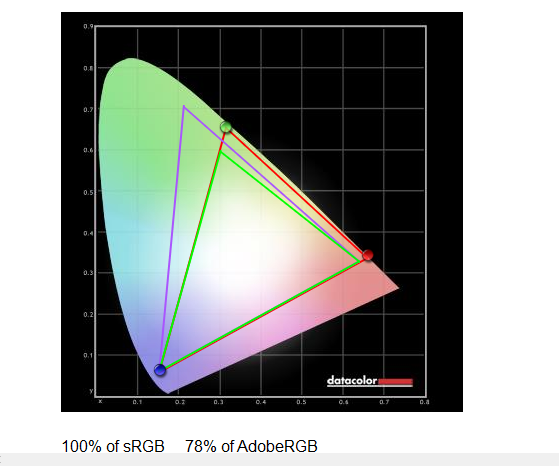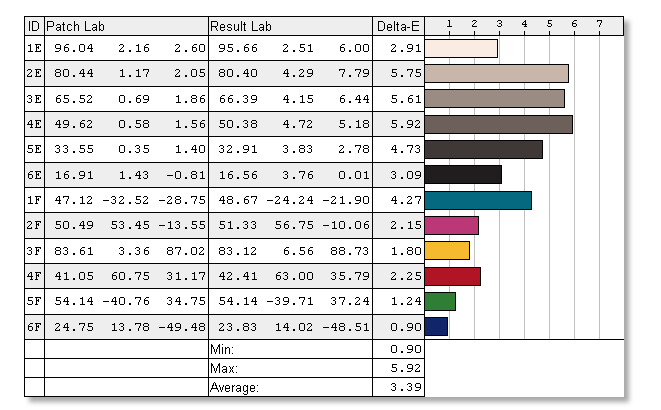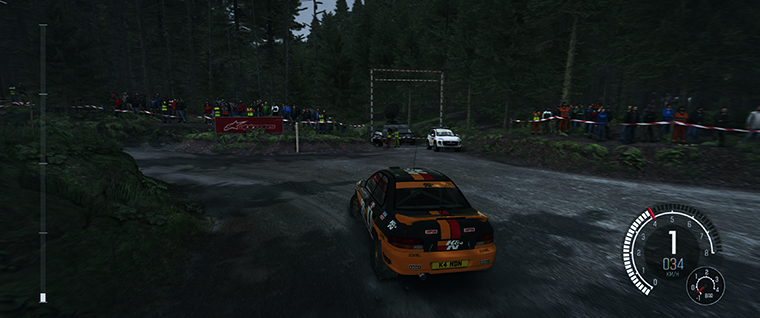Running the numbers
A monitor review based on descriptive visual analysis will always have the underlying problem of subjectivity; assessments of panel quality will vary from user to user depending on their normative expectations. To get around this we’re deploying Datacolor’s Spyder 4 Elite professional monitor analyser to return a quantitative assessment of display quality.
We also make use of the Leo Bodnar video signal input lag tester which allows us to test the combined input latency of a specific monitor at the 1080p resolution with 60Hz operation only (a limitation of the testing equipment).
These numerical results, we feel, add extra utility to our reviews allowing us to more accurately benchmark the following display characteristics:
- Colour gamut relative to sRGB and AdobeRGB industry standards
- Brightness levels and contrast ratios
- Colour uniformity
- Luminance uniformity
- Colour accuracy (Delta-E)
- Input latency
Gamut
We expect any reasonable monitor to completely fill the sRGB space and a good chunk of the Adobe RGB. The latter has more green hues which are outside of the remit for this iiyama. Having stared at the screen for the better part of a week, the lack of fuller Adobe RGB coverage doesn't hold it back for regular work such as spreadsheets, HTML editing, web browsing, and so forth.
Colour accuracy
The Delta-E figure corresponds to how close the displayed colours match up with real life. A lower Delta-E is better, meaning closer reproduction, and any figure below 2 is considered good.
The '3490 isn't good in this regard, even after calibration. You can see that the darker colours suffer from a lack of accuracy. This is not a photographer's monitor.
Colour uniformity
It is much, much stronger with respect to colour uniformity across the 34in panel. We normally see a worst-case scenario of 10 per cent, or more, when comparing colours across the screen; this super-widescreen does a supreme job of keeping consistency.
Luminance uniformity
Any monitor that can keep luminance down to single-digit figures for most of the display is also rated as very good. Well above average in this test, too.
Brightness and white point
The screen isn't overly bright at any setting - a 200 nits rating at 75 per cent is about average for these types of panels. Blacks are nice and inky though, helped by the colour consistency across the screen. Our only concern is the relatively low contrast during the checkerboard test - we routinely see screens manage 700-800:1 ratios.
Input lag and power consumption
Running at 1080p, which is the limit of the input-lag tester, we recorded a figure of 13.2ms, or about average for a screen of this ilk. That said, we didn't perceive the lag in fast-paced games. Once calibrated, the screen used 27W on a black screen and 31W on a pure white, which is again about average.
Gaming and productivity
This is where it becomes interesting. Ultra-widescreen gaming hasn't really taken off despite having coverage advantages over 16:9 aspect ratios. It is up to game developers to build specific support for the resolution such that scaling and heads-up displays work properly. From our suite, Dirt Rally plays just lovely, averaging a solid 75fps using an MSI GTX 1070 Gaming X at the screen's native resolution. Doom runs just fine too, as does Tomb Raider, though Fallout 4 needs some additional tweakery to ensure the aspect ratio and HUD elements are correct.
Using one of these screens long enough makes super-widescreen feel completely natural. The game draws you in while the extra screen real estate is beneficial for spotting enemies. In short, it's an immersive experience that makes it difficult to go back to a standard-aspect monitor. Of course, without support for adaptive synchronisation, you will need a meaty graphics card to get the most out of the iiyama, and we noticed tearing during heavy fighting within Doom.
Gaming is fun, though we feel the majority of users eying up this kind of panel will be content professionals who need more horizontal screen estate. My work setup is two 1080p screens side by side, split by a large bezel. The iiyama packs more pixels - 4.9MP vs. 4.1MP - and is a better fit, especially when having a couple of commonly used programs open side by side. If you so want, the monitor can effectively split into two screens through picture-in-picture support.
Films, too, display well, helped by the excellent uniformity. So while there's plenty of good, what would we change? As alluded to above, the contrast could be better, which is noticed in dark scenes juxtaposed by splashes of lighter colour. Brightness could be a potential hurdle for some, though we were happy with the screen set to 75 per cent of maximum. The biggest gripe for users who want a do-it-all super-widescreen monitor is the substandard colour accuracy.















